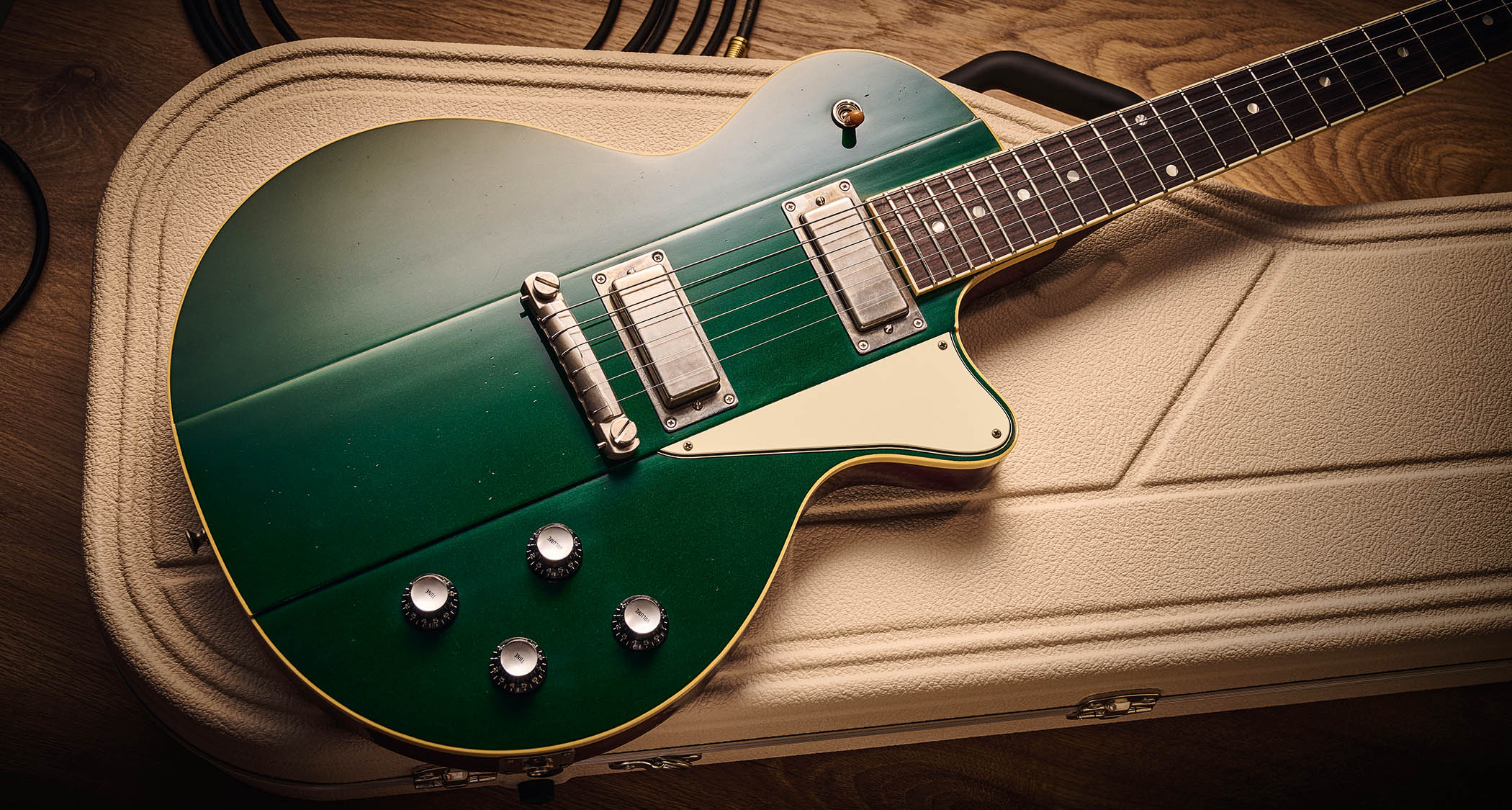Guitar World Verdict
The vintage-informed craft is exceptional, but this is also a very clever original design, albeit one that could easily have come out of the Gibson factory in the early ’60s. That’s not easy to do as convincingly as this.
Pros
- +
Everything!
- +
Seriously good vintage-informed craft, immaculately presented in a used but not abused fashion.
- +
Superb ‘old Gibson’ feel and far-reaching hot pot of vintage sounds.
- +
A modern classic in the making.
Cons
- -
Er, no!
You can trust Guitar World
What is it?
It might look like another very cool vintage guitar, but, no – this new-for-2025 Dakota Standard is the work of Worcestershire, UK-based illusionist Neil Ivison. Arriving in its very practical logo’d cream Hiscox guitar case (like many quality UK builds do), it just doesn’t prepare you for the time-warp vibe of the guitar itself.
The Dakota came from a desire to create a more usable version of Gibson’s classic Firebird: “There must be a way I can make this more ergonomic but still keep the sound...” Neil mused when we spoke to him about the origins of the design.
Since that time, the Dakota has more than earned its place in the Ivison line-up alongside the Hurricane, and it now comes in single-pickup One format and also with korina replacing the all-mahogany build of the model we have here.
In fact, for 2025, the Dakota Standard gets in-house Ivison pickups (originally the model used Sunbears), plus an optional bound, coloured top with natural-back style, which means new colours can be added, and our review piece shows that off with Neil’s take on Cadillac Green.
Finally, you can now order your Dakota with either the Faber wraparound you see here, a vintage-style ABR-1 tune-o-matic and tailpiece, or with a short Maestro vibrato.
Based around a short scale length taken from a 50s Gibson Les Paul Junior, it’s a simple electric guitar, though more like a Junior or Special than that oversized Firebird.
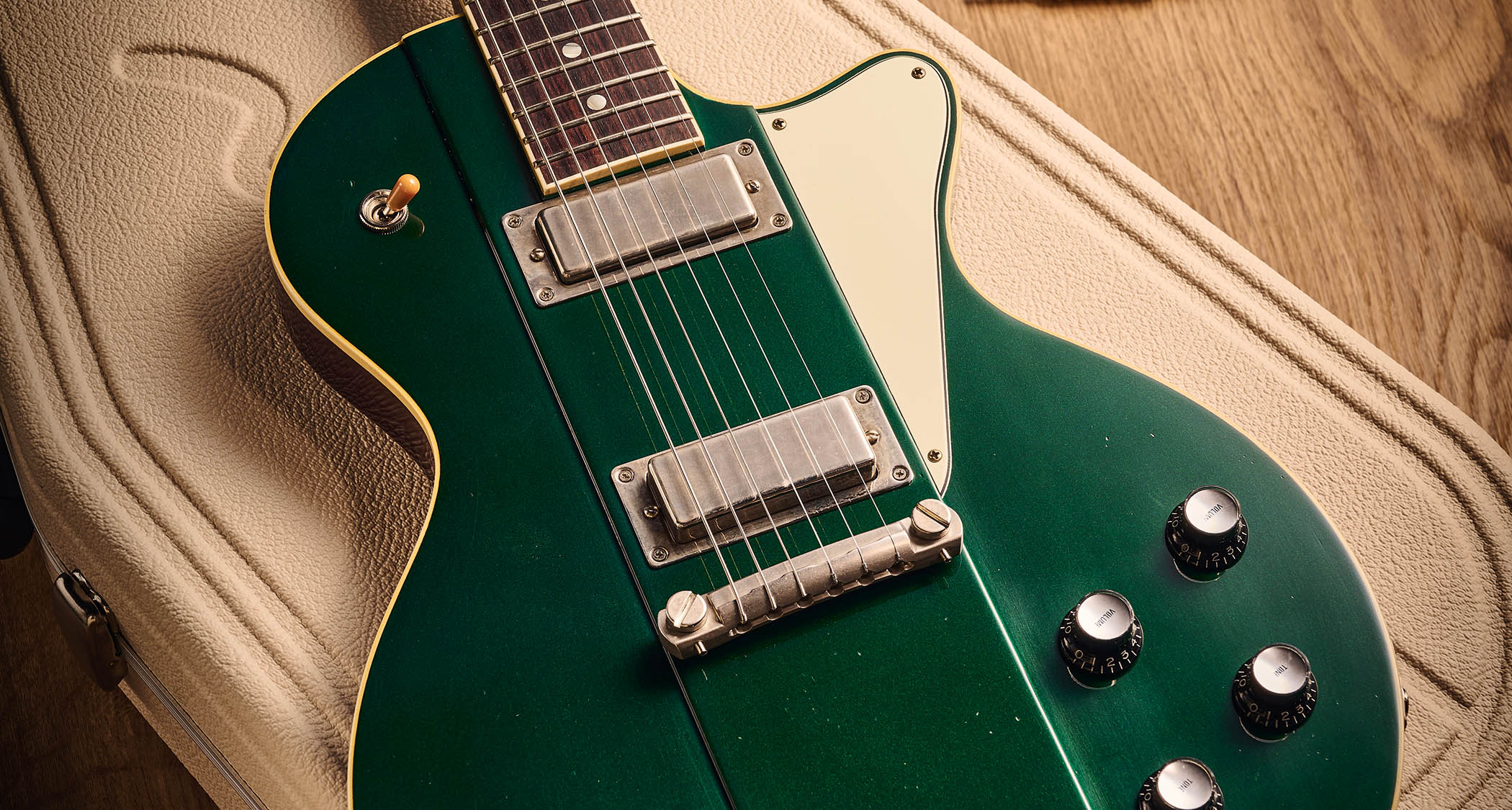
The single-cut shape really isn’t a million miles from our 50s Junior in outline, with the exception of the rounded and more stylised treble horn. It’s slab-bodied, albeit with that nod to the Firebird with its slightly raised centre section, which adds subtle form to the otherwise flat front and is a platform for the twin pickups and wraparound bridge to be mounted on. It also provides a straight line to which the reverse pickguard can be lined up.
All the latest guitar news, interviews, lessons, reviews, deals and more, direct to your inbox!
That bridge pickup wants to sound like a P-90, but it sits so well as a lower-powered, not over-bright humbucker that sounds like instant Mike Campbell
This isn’t a unique-to-Ivison idea, of course. Most recently Eastman’s Juliet design from 2022 featured a similar raised centre motif and was a nod to a more playable Firebird. This is particularly evident on the more recent Henry James signature model, which uses a pair of Firebird-style mini-humbuckers.
The single-ply edge binding might be optional, but to our eyes it just seems to elevate the design above a Junior or Special. The back, sides and neck-back all take on that dark chocolate hue, which is virtually identical to our reference 1957 Gibson Les Junior in colour.
The African mahogany body (which appears to be one piece) has a very striped, straight grain, and there’s some light chamfering to reduce the body bulk where the neck meets the body. We have a standard depth of 45mm at that centre section, slightly thinner at 42.5mm for the body flanks.
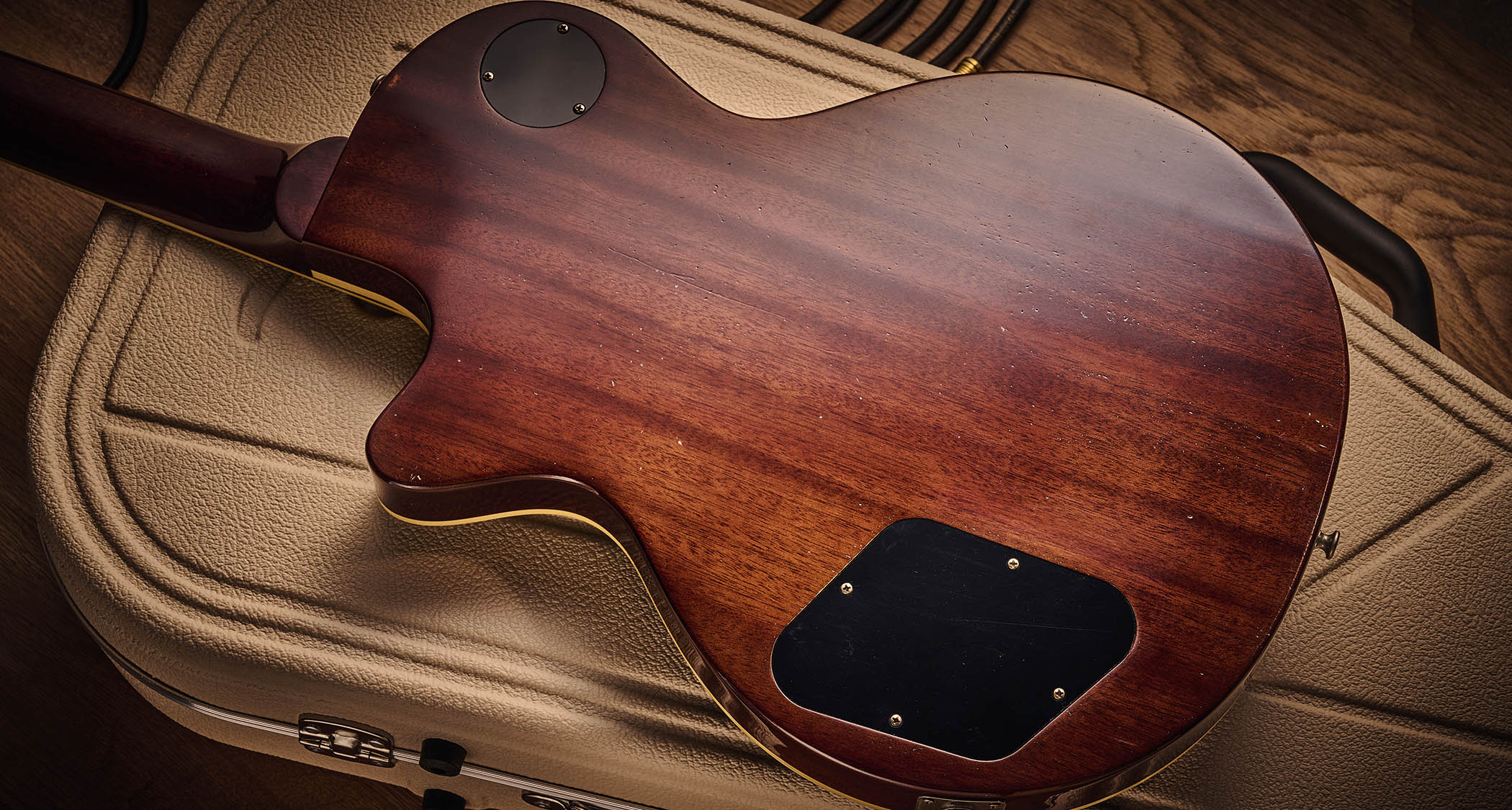
The neck is classed as quarter-sawn ‘old growth’ Honduran mahogany and fits original Les Paul style with a long tenon extending under the neck pickup, while the truss rod is old-school single action. The clever design of the three-side, lightly back‑angled headstock means it looks familiar, classic even, without being a knock-off. The heel, like the majority of the build, is very old Gibson-like, too.
Overall, the Dakota really does come across as a Special-meets-Firebird circa 1963. Surely, the teams at Gibson built one of these, didn’t they? The illusion is enhanced when it comes to the hardware, which is all very authentically aged – from the Faber bridge, and the mini-humbucking covers and mounting rings, to the Gotoh tuners, three-ply pickguard, screws and small Gibson-like strap buttons. And while there’s no obvious ageing to the control knobs, hey, is there a cooler knob out there?
Specs
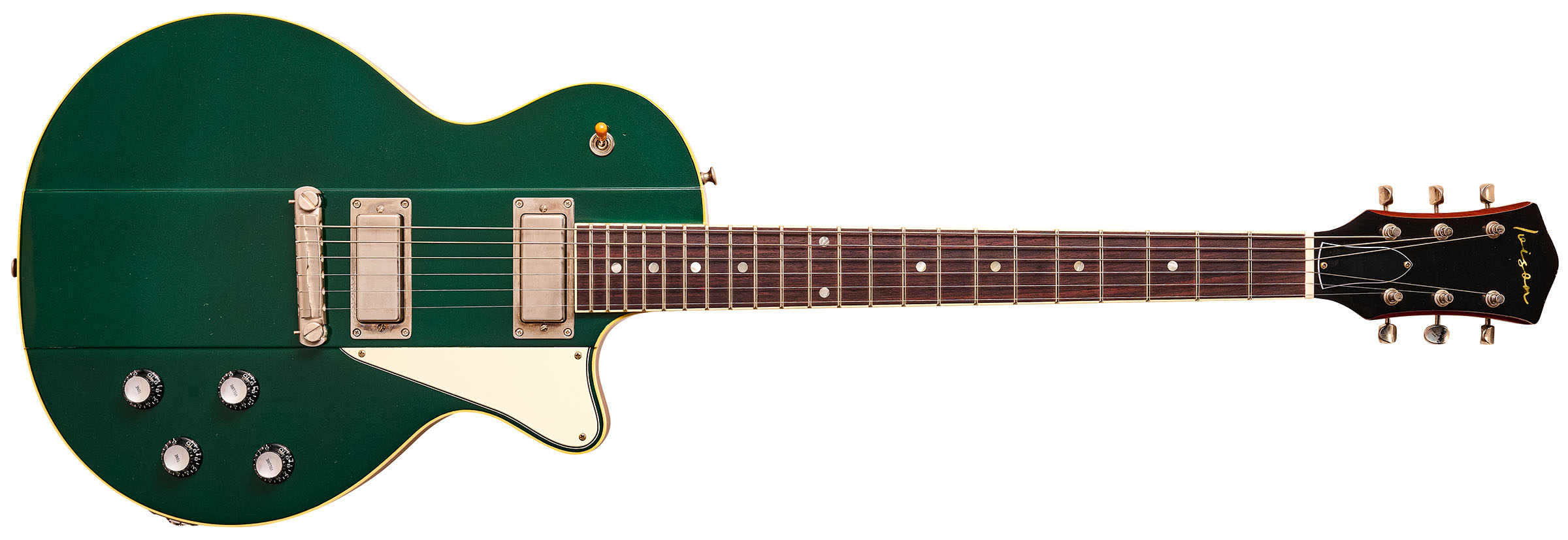
- PRICE: £4,495 (approx $6,099) inc hard case
- ORIGIN: UK
- TYPE: Single-cutaway, solidbody electric
- BODY: African mahogany with raised centre and bound edge (optional)
- neck: Quarter-sawn Honduran mahogany ’59 profile, glued-in
- SCALE LENGTH: 625.5mm (24.625”)
- NUT/WIDTH: Polished buffalo bone/43mm
- FINGERBOARD: Cream bound AAA rosewood, vintage pattern celluloid dot inlays, 305mm (12”) radius
- FRETS: 22, medium (Jescar 45100)
- HARDWARE: Faber TPWC-’59 compensated wraparound bridge/tailpiece; Gotoh SD90 Kluson-style tuners – aged nickel plating
- STRING SPACING, BRIDGE: 52mm
- ELECTRICS: Ivison Freedbird set (Firebird-style humbucker at neck; P-90 in Firebird-style cover at bridge), 3-way toggle pickup selector switch, volume and tone for each pickup
- WEIGHT (kg/lb): 3.47/7.63
- OPTIONS: Vintage pattern trapezoid inlays; Ivison pickups (P90Bird, PAFBird, P90 soapbars and ’59-spec Patent Applied For style)
- RANGE OPTIONS: Single‑pickup Dakota One (£3,495, available with mahogany or korina body) and Korina (£4,495, with korina body)
- LEFT-HANDERS: No
- FINISHES: Cadillac Green (as reviewed), Tobacco Sunburst, Pelham Blue, other colours on request – lightly aged nitrocellulose gloss
- CONTACT: Ivison Guitars
Playability and sounds
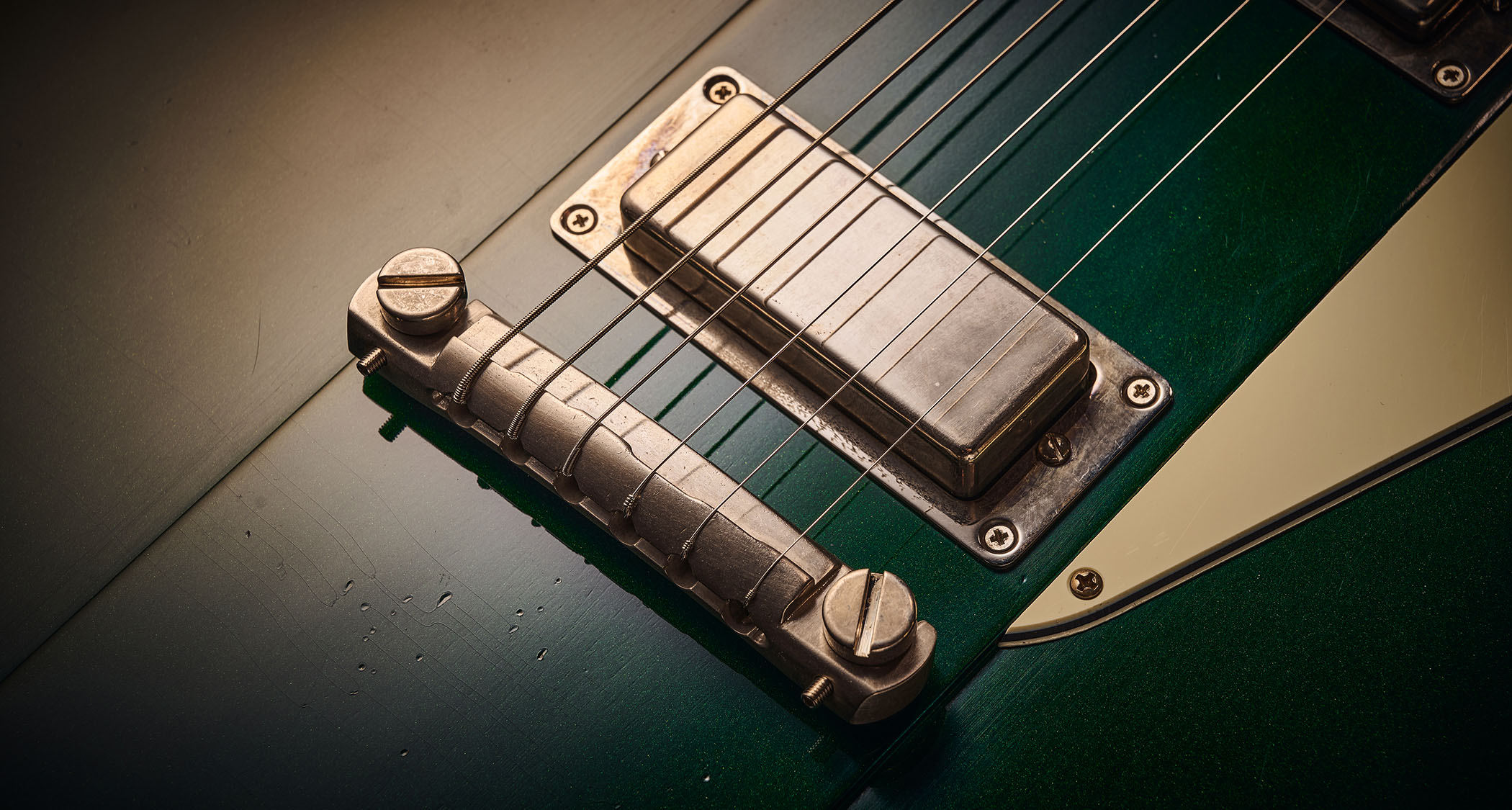
This light ageing of the finish and hardware shouldn’t affect the playing feel, but it really does: this Dakota does not feel remotely like a brand-new guitar. But it doesn’t feel overused or abused, either; if you like classic instruments, the neck and fretwork might well sway you before you’ve even plugged in.
This is lovely, unfussy craft with a very good choice of wire gauge, which is spec’d by Jescar at 2.54mm wide by 1.14mm high. In practice, it’s slightly lower but feels far from modern yet perfectly playable.
The fret ends are nicely domed, the binding edge slightly rounded but not overdone. In terms of depth, the neck is slightly slimmer than previous Ivison Hurricanes we’ve played – 21.3mm at the 1st fret, 23.2mm at the 12th with a pretty standard nut width at just a shade under 43mm, which gives the neck that classic ‘C’. Not too thick, not too thin.
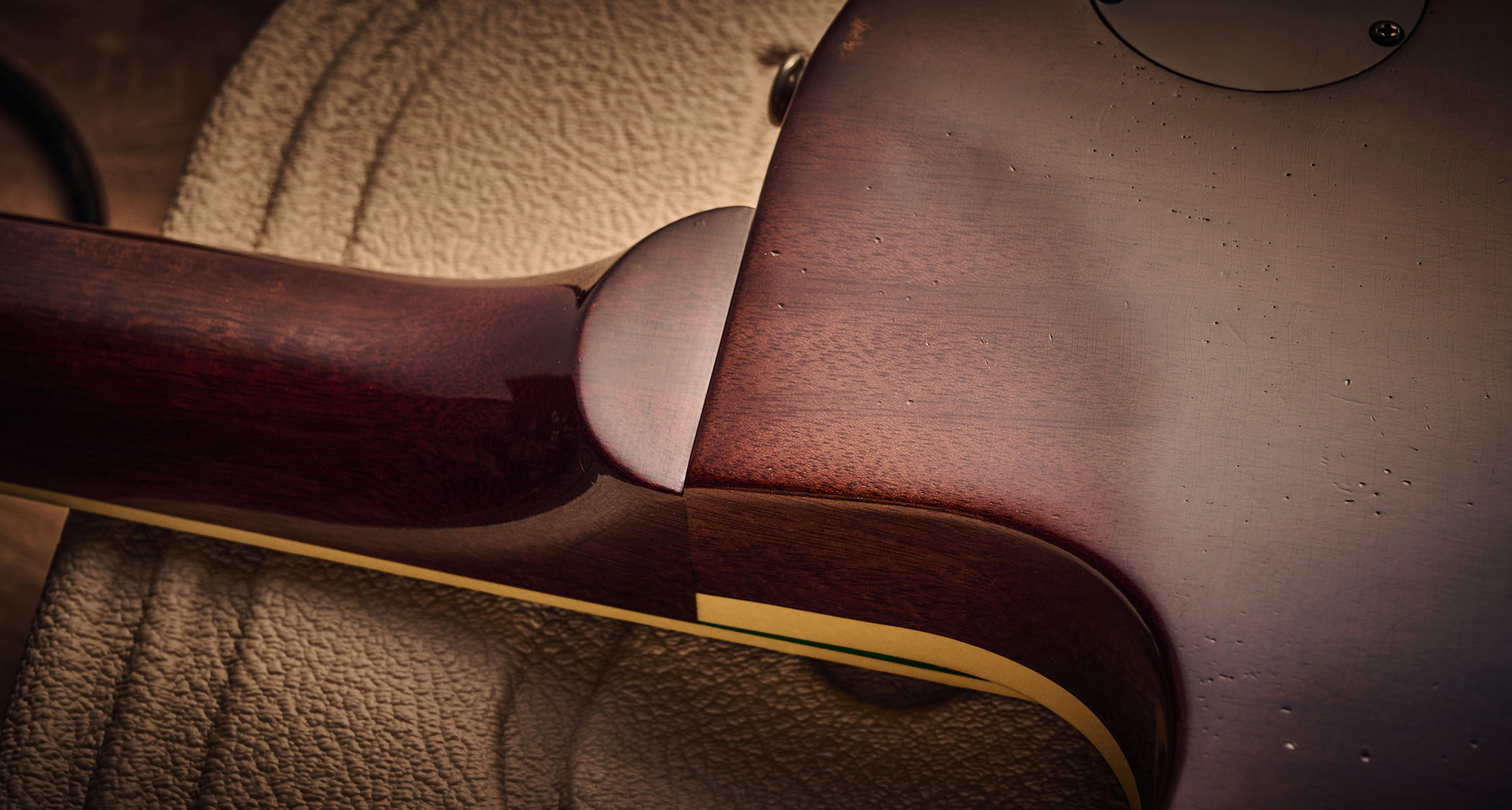
Weight-wise, the word ‘perfect’ springs to mind. Playing seated or strapped on, the Dakota just disappears. It doesn’t slip off your lap and it doesn’t drag on your shoulder, and after a few unplugged strums you know it’s game-on. It’s quite loud for starters, with a big ring.
It’s interesting to compare the Dakota, unplugged, with that ’57 Junior reference, which has more of a midrange push; the Dakota sounds a little brighter and lighter.
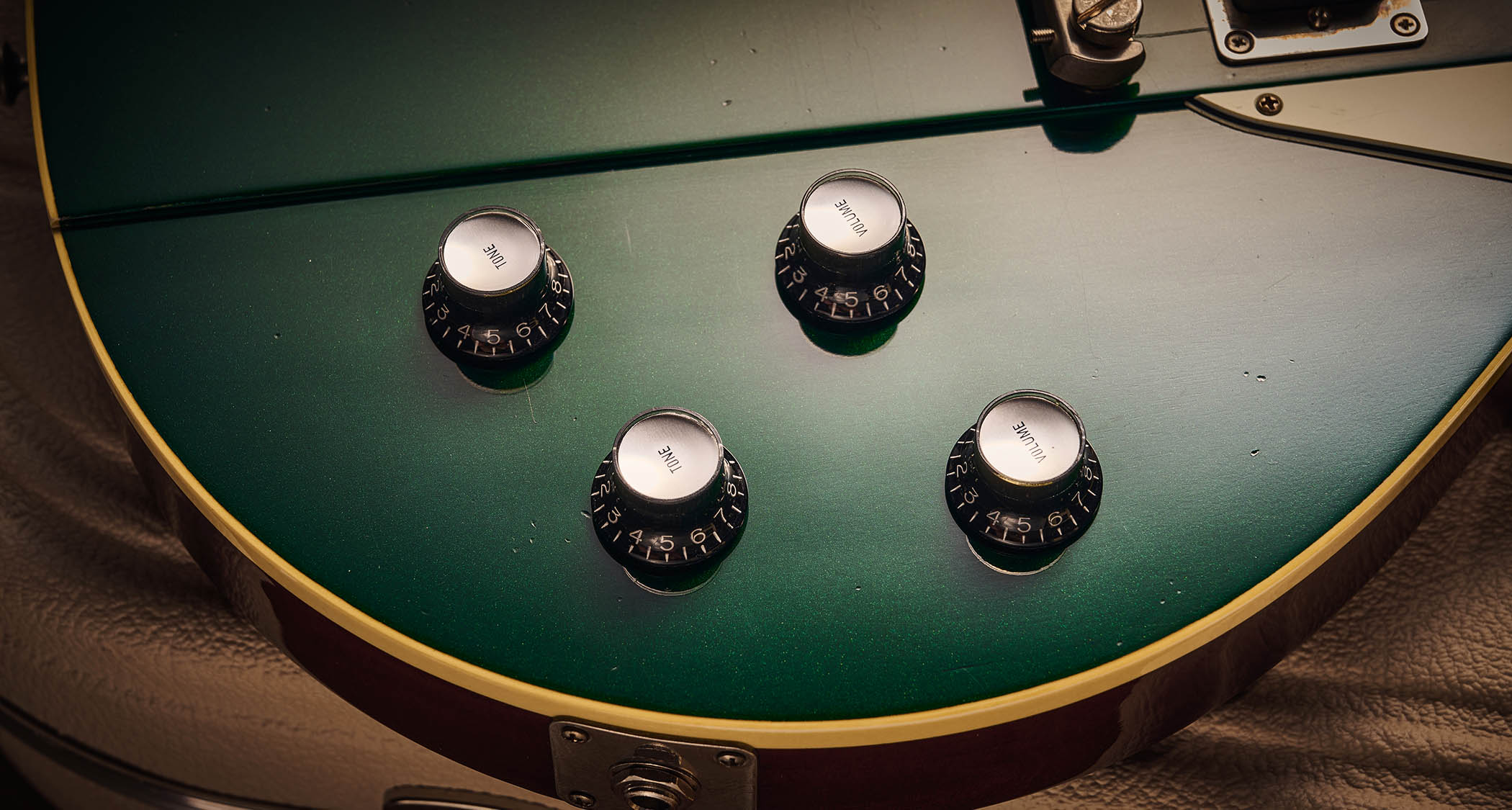
Previous Ivison builds we’ve played have featured Sunbear pickups, and this is the first time we’ve heard the in-house designs. These follow the Firebird style but with a few changes.
It’s certainly quite the sonic stew with the bridge pickup, by design, aping the girth and slight compression of an overwound P-90, although here it’s a little milder in output (certainly compared with our ’57 Les Paul Junior), which balances rather nicely with that ‘big Tele’-like neck pickup.
There’s a lot of ring and chime to the guitar, though it’s subtly rounded and fuller than our own Tele reference, plus we’re feeling ‘Gibson’ even if what we’re hearing is a little more California.
As we’ve discussed on plenty of occasions, the ’50s- or vintage-style wiring just seems to increase the colours: pulling back the tones thins the voice, while the top-end of the volumes morph intuitively from ‘rhythm’ to ‘lead’.
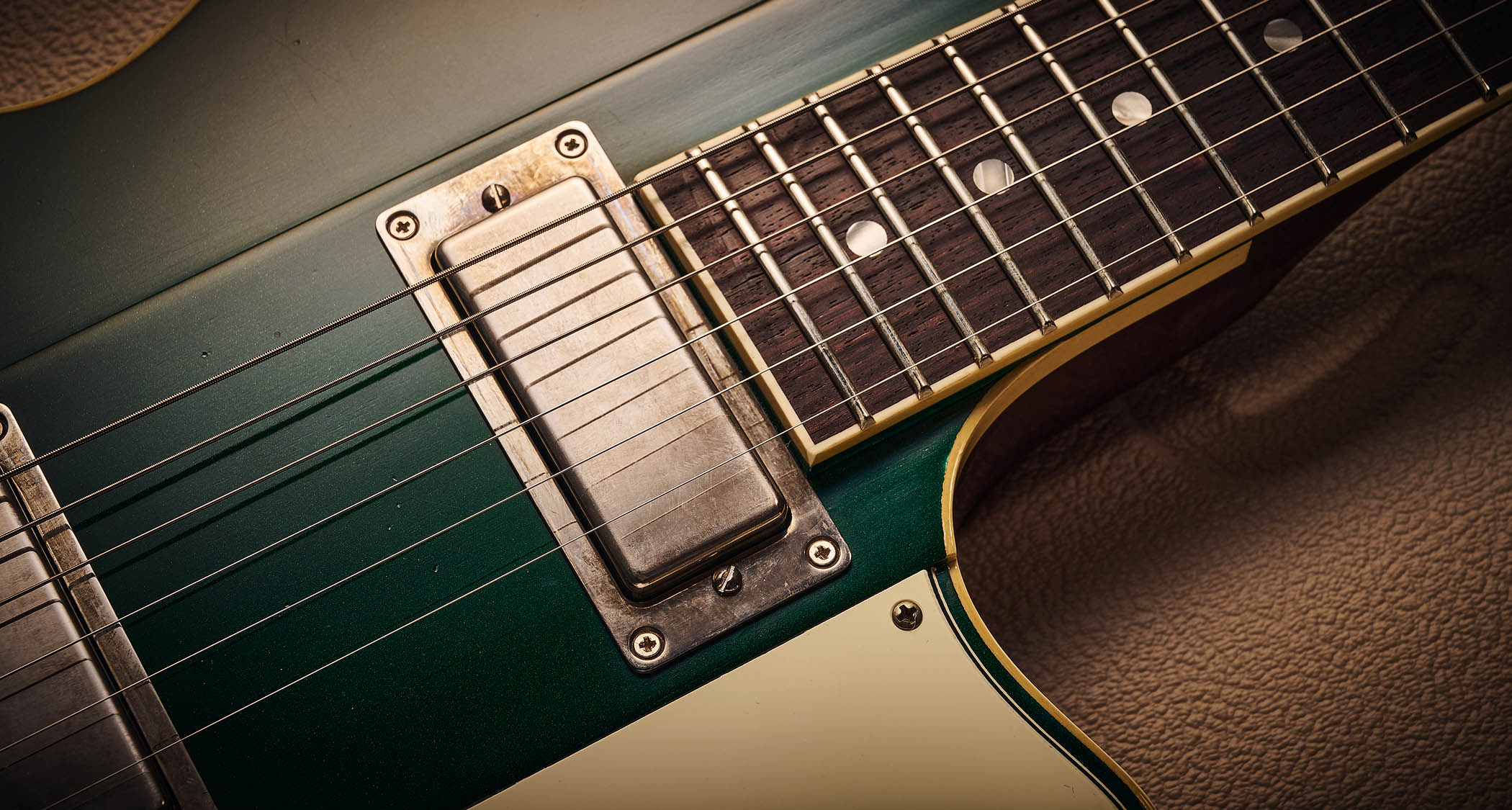
Overall, it’s a rather beguiling sound, seemingly not quite one thing nor another yet the quality and musicality is hugely evident. On the one hand, that bridge pickup wants to sound like a P-90, but it sits so well as a lower-powered, not over-bright humbucker that sounds like instant Mike Campbell to this writer – an illusion not helped when you play some of his classic slide motifs (oh yes, the Dakota is a superb slide guitar!).
It sits very well in a simple guitar-band mix. It’s jangly whenever you want, but it loves a little dirt, and then that neck pickup is super soulful – pull back the volume and it almost does ‘acoustic’ jazz. We haven’t mentioned the pickup mix. Needless to say, it’s stupidly good – a little soul and funk in there, but add some slapback and you’re in Memphis.
After initially tuning up and just stretching the strings in, did we tune the guitar again during our lengthy sound test? Not that we can remember. Everything about the build oozes quality and classic craft, topped off with a wonderful feel and sounds to match. Another level.
Verdict
Verdict: ★★★★★
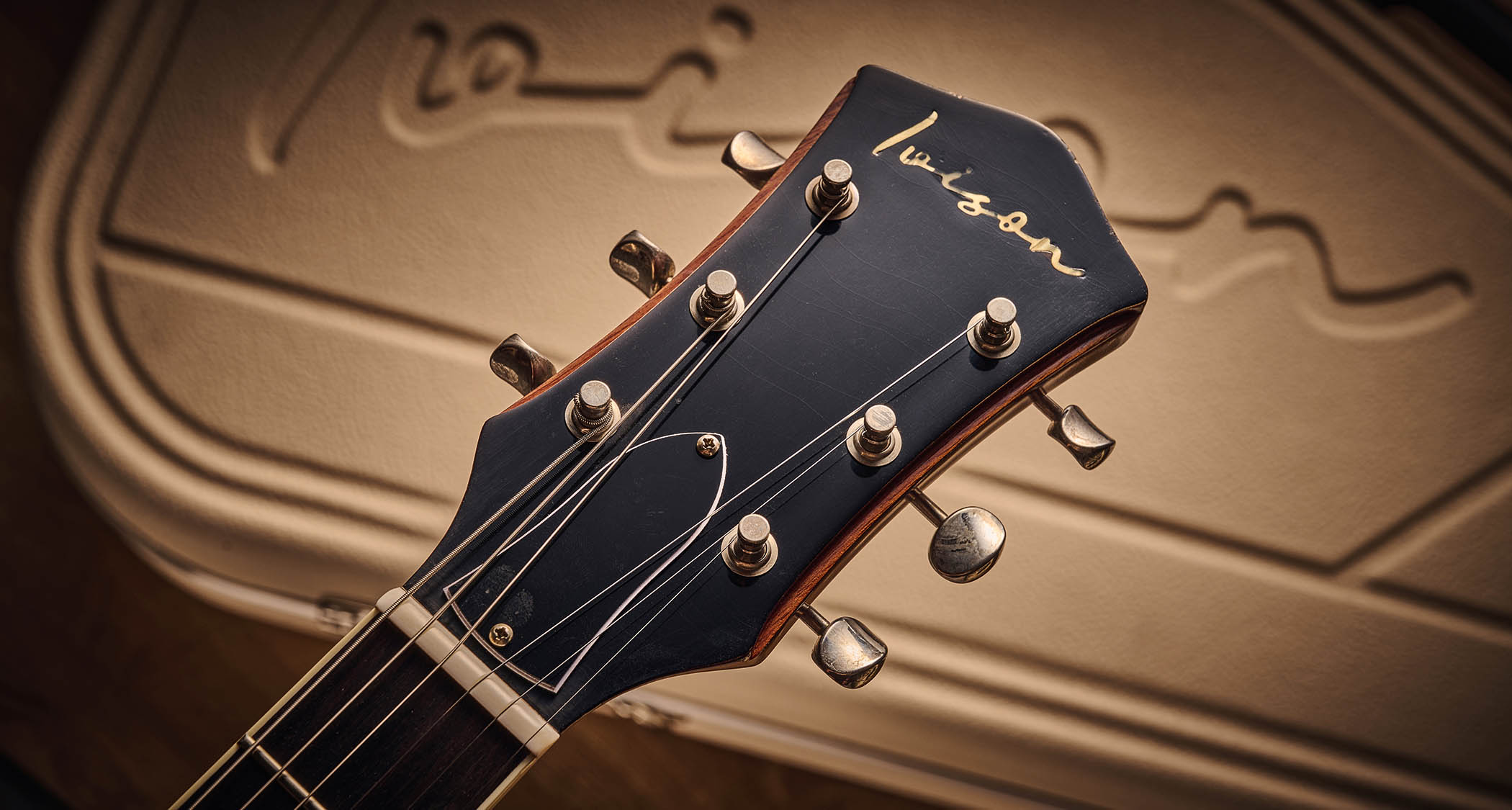
While Ivison might not be the only maker, large or small, that has considered a more ergonomic Firebird, the Dakota is a real class act: very easy on the eye, not to mention in the hand or on the ear.
It took us some time to get this Dakota and no sooner than we did it was needed back as a pretty major artist was interested
It’s this originality – rather than just being another replica or clone – that is so attractive. The Dakota has already engaged with some big players, as has the Hurricane, so clearly we’re far from the only ones to enjoy the ride. And that demand is very evident: it took us some time to get this Dakota and no sooner than we did it was needed back as a pretty major artist was interested. Frankly, we’re not surprised.
Guitar World verdict: The vintage-informed craft is exceptional, but this is also a very clever original design, albeit one that could easily have come out of the Gibson factory in the early ’60s. That’s not easy to do as convincingly as this.
Hands-on videos
Ivison
Tim Forster Guitars
- “Richard Fortus messaged me and said, ‘I’ve shown Slash your guitar and he likes it, too…’ After that, the phones didn’t stop”: How a small UK boutique builder became a Guns N’ Roses favorite and the next big name in retro-inspired electric guitars
- This article first appeared in Guitarist. Subscribe and save.

Dave Burrluck is one of the world’s most experienced guitar journalists, who started writing back in the '80s for International Musician and Recording World, co-founded The Guitar Magazine and has been the Gear Reviews Editor of Guitarist magazine for the past two decades. Along the way, Dave has been the sole author of The PRS Guitar Book and The Player's Guide to Guitar Maintenance as well as contributing to numerous other books on the electric guitar. Dave is an active gigging and recording musician and still finds time to make, repair and mod guitars, not least for Guitarist’s The Mod Squad.
You must confirm your public display name before commenting
Please logout and then login again, you will then be prompted to enter your display name.
